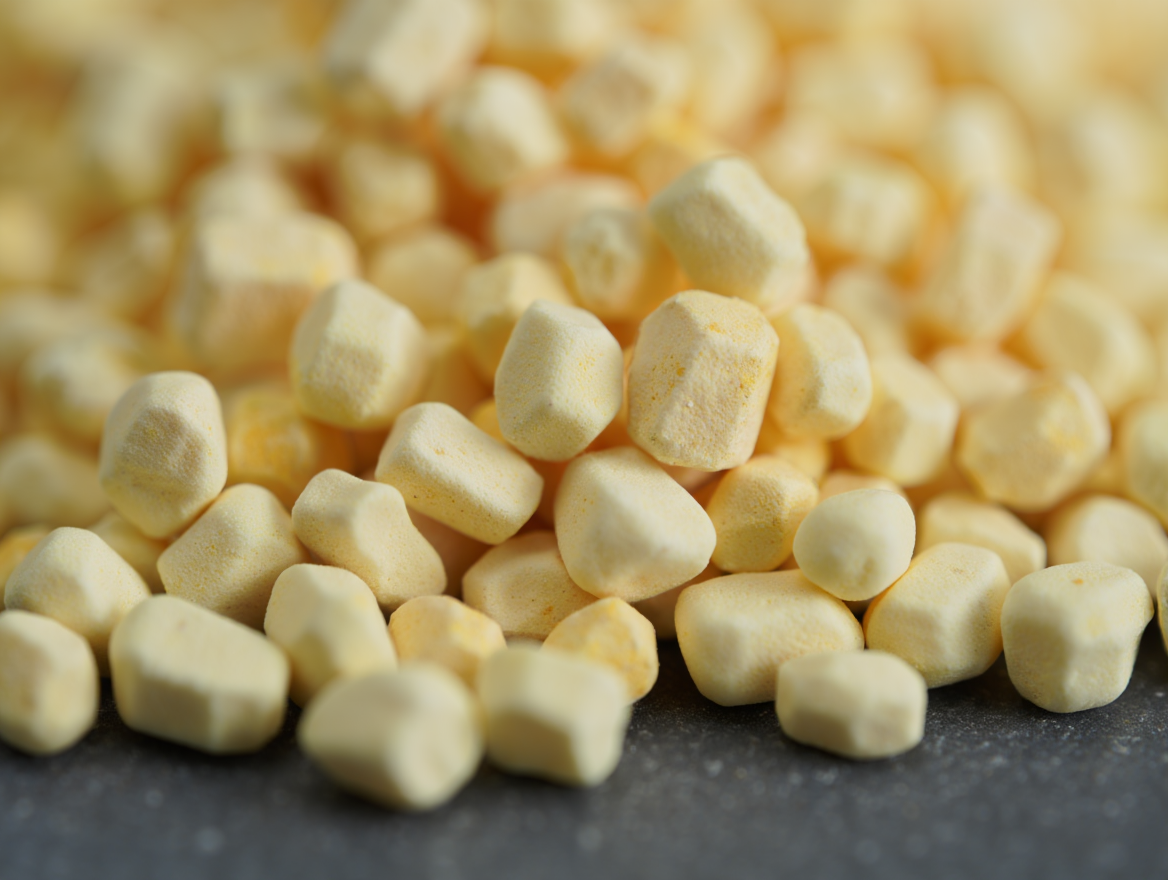
Introduction
Diammonium Phosphate (DAP, chemical formula (NH₄)₂HPO₄) is one of the world’s most important fertilizers, providing a balanced source of nitrogen (18%) and phosphorus (46% P₂O₅). Its dual-nutrient profile makes it especially valuable during early crop growth, when phosphorus is critical for root development and nitrogen stimulates vegetative growth.
DAP is the most widely traded phosphate fertilizer globally, making it a bellwether for international fertilizer markets. Its pricing and availability directly affect food production, particularly in regions like South Asia, where DAP is heavily subsidized and widely applied.
History & Development
Phosphorus has been recognized as essential to plant growth since the 19th century, with superphosphates being the first commercial fertilizers. DAP’s development came later in the 20th century, when chemical engineers discovered that reacting phosphoric acid with ammonia could produce a concentrated, granular fertilizer with both nitrogen and phosphorus.
From the 1960s onwards, DAP became a cornerstone of global fertilizer trade, especially as developing countries expanded cereal and oilseed production. India’s large-scale subsidy programs cemented its dominance in Asia, while Morocco and the US emerged as major suppliers.
Production Process
DAP is produced by reacting ammonia (NH₃) with phosphoric acid (H₃PO₄), which itself is made by treating phosphate rock with sulphuric acid.
Inputs:
- Ammonia: Typically produced from natural gas.
- Phosphoric acid: Derived from phosphate rock (apatite), treated with sulphuric acid.
Output:
- Granular fertilizer containing 18% nitrogen and 46% phosphorus (as P₂O₅).
The production process requires access to both ammonia and phosphate rock. As a result, DAP plants are often located either near phosphate mines (e.g., Morocco, Florida) or in regions with integrated supply chains.
Global Supply & Trade
DAP is the most traded phosphate fertilizer, moving millions of tonnes across global markets annually.
Key Producers
- China: The largest producer and exporter, though it frequently restricts exports to stabilize domestic supply and prices.
- Morocco: Home to OCP Group, which controls over 70% of the world’s phosphate rock reserves.
- United States: Historically a major exporter, with Mosaic leading production.
- Saudi Arabia: Through Ma’aden, rapidly growing as a global supplier.
- Russia & CIS: Significant producers, though trade is disrupted by sanctions and geopolitical constraints.
Key Importers
- India: The largest importer, heavily subsidizing DAP to support farmers.
- Pakistan, Bangladesh, Brazil: Other major demand centers.
Applications
- Agriculture:
- Widely used in cereals (wheat, maize) and oilseeds (soybean, canola).
- Favored during planting, as phosphorus supports early root development.
- Horticulture & Specialty Crops: Occasionally used in blends or tailored formulations.
Its nitrogen + phosphorus combination reduces the need for separate applications, improving efficiency during critical growth stages.
Market Economics
Pricing Benchmarks
- FOB Morocco and FOB China are key export benchmarks.
- CFR India is the single most watched import price, given India’s scale.
Demand Drivers
- Subsidy policies in India and other developing countries.
- Phosphate rock and sulphur prices, which heavily influence DAP production costs.
- Export restrictions in China, which can cause sudden supply shortages.
Trade Dynamics
The DAP market is often described as a “swing market,” with China’s export policy determining global availability. When China restricts exports, prices spike globally; when it opens supply, markets ease.
Why DAP Matters
- Food security: DAP is essential for wheat, rice, and maize yields across Asia and beyond.
- Balanced nutrition: It addresses two essential macronutrients in one pass.
- Geopolitical leverage: Control of phosphate reserves (notably by Morocco) gives certain countries outsized influence over global food systems.
Sustainability & Risks
- Mining impact: Phosphate rock mining, especially in North Africa, raises environmental and geopolitical concerns.
- Eutrophication: Phosphorus runoff from over-application leads to algal blooms and waterway pollution.
- Carbon footprint: Production relies on ammonia and sulphuric acid, both carbon-intensive.
- Geopolitical risk: Concentration of reserves in Morocco, China, and a handful of suppliers makes global food security vulnerable to trade policy.
Mitigation
- Improved application techniques to reduce phosphorus losses.
- Development of enhanced-efficiency phosphate fertilizers.
- Recycling phosphorus from waste streams (emerging but limited).
Future Outlook
- India: Will remain the largest importer, with subsidy reform a key policy challenge.
- China: Export policies will continue to drive global price cycles.
- Morocco & Saudi Arabia: Poised to increase dominance as low-cost producers with vast reserves.
- Sustainability: Long-term solutions may focus on phosphorus recovery and precision application, but DAP will remain central to global fertilizer systems for decades.
In short: DAP is both a backbone fertilizer and a strategic commodity. It links phosphate mining, global energy markets, and government subsidy systems directly to the world’s ability to grow staple crops.




